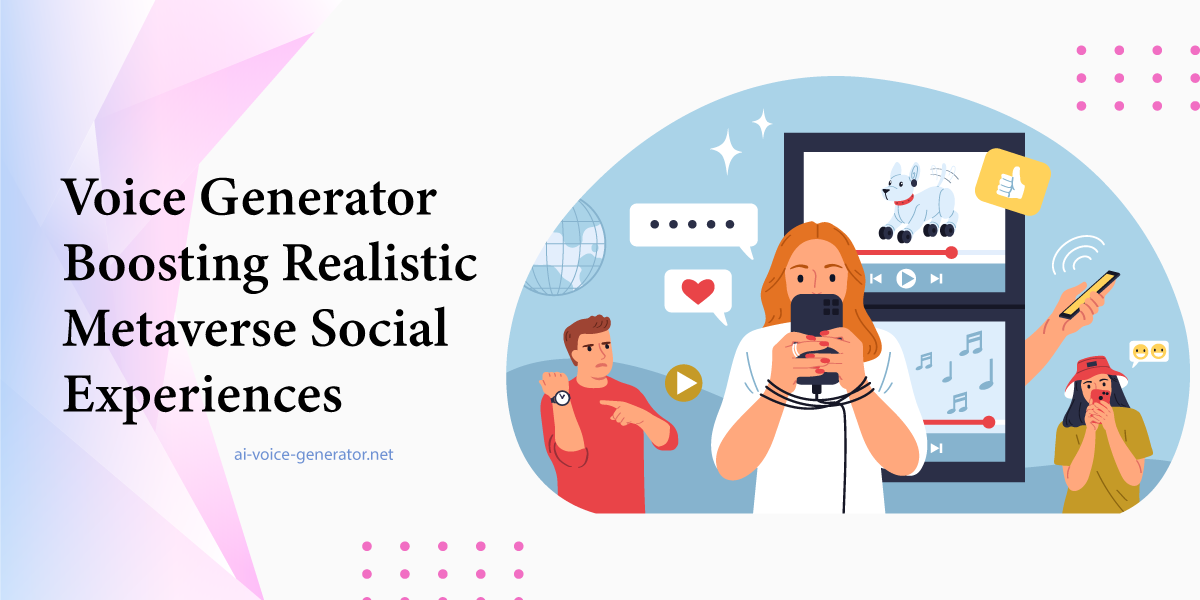
Text to Speech for Crafting Realistic Emergency Drill Scenarios
In situations where seconds matter, clarity and realism can save lives. That’s exactly why organizations today are turning to text to speech to create accurate, natural-sounding emergency drill scenarios. These simulations require more than generic robotic voices. The goal is authenticity—voices that resemble real human urgency, command, and tone. Whether it’s a fire alarm announcement in a hospital or a tornado drill in a school, AI-powered voice synthesis brings a lifelike edge to pre-recorded instructions.
With increasing workplace safety regulations and growing awareness of disaster preparedness, industries are investing in tools that go beyond simple sound clips. This is where the value of text to speech free platforms becomes clear, offering budget-friendly options without compromising on quality. Emergency coordinators can now produce drill content that sounds as though it’s coming from a live dispatcher, enabling employees and students to engage in realistic, high-pressure rehearsals.
As drills become more complex and technology advances, it’s not surprising that more safety officers are choosing AI text to speech solutions. They are accessible, scalable, and adaptable—capable of crafting voices for multilingual instructions, location-specific emergencies, or customized tones based on institution needs.
Realistic Drill Preparation Using AI-Powered Voice Systems
Emergency preparedness isn’t just about alarms and exits anymore. Institutions want every voice message to feel as if it’s coming from a trained professional. With text to speech online, organizations can instantly convert written emergency instructions into audio content, reducing delays and improving the quality of training material. In many environments, such as crowded malls or government buildings, this approach helps staff respond better during drills.
From “code red” lockdown alerts to chemical spill warnings, today’s drills involve a variety of scenarios that require adaptable narration. Through text to voice generator platforms, safety officers can tailor vocal tones to suit each drill’s emotional weight. Whether it’s calm reassurance during an evacuation or stern commands during a lockdown, these voices guide people clearly and effectively.
Hospitals, for example, benefit immensely from voice simulations during medical emergency training. In such high-stakes environments, participants can’t afford miscommunication. The rise of reliable text to audio free tools empowers institutions to add authentic voice lines in seconds, without involving actors or expensive studio recording sessions.
Enhancing School and Campus Drills with Human-Like Voices
Schools are one of the most frequent adopters of AI-generated audio for safety drills. Children and teenagers often respond better to familiar, steady voices rather than robotic tones. This is where modern text to speech voices help fill the gap. These voices mimic realistic human speech patterns, offering a balance between clarity and warmth that’s essential in student-facing environments.
For school districts that conduct monthly drills covering events like earthquakes or intruder alerts, it’s essential that the instructions don’t sound repetitive or flat. Incorporating variation in voice style, speed, and pitch can make students more attentive and less prone to tuning out instructions. This can be easily achieved through high-quality free online text to speech tools that offer customization without extra costs.
Another often overlooked aspect is accessibility. With many students having different learning needs, auditory support using synthesized speech can significantly improve comprehension. The seamless integration of voice technology into school-wide alert systems allows everyone—students, teachers, and staff—to be on the same page when seconds count.
Industry-Specific Use Cases in Emergency Training
Different sectors demand different tones, message lengths, and urgency levels. In airports, for example, emergency simulations often need to accommodate multiple languages, large open spaces, and high ambient noise. Using a text to speech generator helps create clear announcements that can pierce through distractions without creating panic.
Corporate high-rises run full-building evacuation drills. Facility managers use AI voices to simulate messages from security or fire control centers. Instead of relying on staff with potentially shaky delivery, pre-recorded AI-generated instructions ensure consistency and professionalism. The natural tone produced by advanced text to speech voices tools fosters more confidence among employees, leading to smoother and more effective training outcomes.
Warehouses and manufacturing plants also benefit. Drills in these locations involve unique hazards—chemical spills, equipment failure, or worker injury. Instructions need to be precise and timed properly. By using text to speech online tools, safety officers can prepare tailored voice scripts and test them in live environments for effectiveness.
AI Voice Tools Bridging Language Gaps During Drills
Multilingual support has become a core feature of modern AI text to speech platforms. In increasingly diverse workplaces, drills often require instructions in multiple languages. Manually translating and recording these messages is not only time-consuming but also prone to inconsistencies. AI voice systems can convert a single script into many languages with native-like pronunciation.
For example, a factory with employees from various national backgrounds can use text to voice generator tools to craft emergency messages in Spanish, Urdu, Tagalog, and Mandarin—all from a single interface. This ensures inclusivity and boosts overall safety compliance.
In multilingual schools and public service organizations, these tools also help instructors demonstrate correct pronunciation of emergency terms, helping ESL learners become more familiar with phrases they may not hear often but must understand instantly in a crisis.
Speed and Efficiency in Emergency Scenario Production
One of the biggest advantages of using platforms like AI Voice Generator is the sheer speed at which messages can be produced. For time-sensitive operations or sudden regulation changes, traditional recording processes just can’t keep up. Safety departments often have to update training materials overnight—and that’s where text to speech generator tools prove indispensable.
By uploading a revised drill script and selecting a preferred voice, teams can roll out updated simulations in a matter of minutes. There’s no waiting for studio sessions or edits from voice actors. With just a few clicks, companies can ensure their training aligns with the latest emergency protocols.
Furthermore, this approach allows for rapid testing. Want to hear how a message sounds when delivered urgently? Adjust pacing, tone, or volume and replay instantly. This level of flexibility is only possible through text to speech free solutions designed for modern organizations.
Replacing Generic PA Announcements with Dynamic Drill Scripts
Outdated alarm systems and pre-installed public address announcements no longer meet the safety needs of large institutions. They sound robotic, lack detail, and often confuse instead of clarifying. Replacing them with AI-powered text to speech scripts brings back clarity.
Instead of a single repeated sentence like “Please evacuate the building,” a modern drill can now include situational updates, hallway-specific instructions, or building section callouts. Using AI text to speech, it’s possible to preload a suite of messages and trigger them in sequence during drills.
This is particularly valuable in scenarios involving simulated chaos. With AI-generated speech, teams can introduce real-time updates like “The north exit is blocked. Proceed to the west stairwell.” These voices simulate dynamic change, making the drill feel more lifelike and immersive, helping teams prepare for real emergencies.
Addressing Listener Fatigue in Frequent Training Sessions
As drills become more frequent—monthly in schools, quarterly in corporations—listener fatigue is a growing concern. When voices sound too robotic or overused, participants may begin to disengage. That’s why the natural tone of text to speech voices has become essential. AI-generated speech can maintain listener interest with varied intonation, pauses, and articulation patterns.
With customizable voices, instructors can even assign different AI personas to different kinds of messages: calm voices for safety reassurances and sharper, more commanding ones for evacuation notices. This level of differentiation improves participant recall and ensures that important instructions stand out.
Another useful tactic is scripting small changes into each drill. Instead of repeating the same evacuation notice, a text to audio free tool allows teams to switch phrasing, adjust tone, or inject a minor variable. These changes help sharpen attention and eliminate the “tune-out” effect caused by repetitive audio.
Testing Audio Preparedness for Visually Impaired Participants
For visually impaired individuals, the audio component of drills is not supplementary—it’s primary. These participants rely entirely on sound to understand the emergency context. Incorporating free online text to speech audio ensures that safety instructions are accessible, consistent, and of high quality.
AI voices can also support descriptive content—guiding users with detailed navigation cues that go beyond “exit now.” For example, instructions like “Move 20 steps forward, turn left at the vending machine” can be delivered smoothly using text to speech online platforms. This helps build a truly inclusive safety culture.
Institutions can conduct special drills where the standard visual cues are disabled, and participants must rely only on audio cues. These advanced simulations help identify gaps and reinforce the importance of AI-generated speech tools in comprehensive emergency training.
Crafting Scenarios with Emotional and Urgent Tones
Tone is everything in an emergency. A message delivered too calmly may not convey the necessary urgency. One delivered too aggressively may induce panic. Modern AI text to speech tools provide fine control over emotional delivery—serious, commanding, cautious, or urgent tones can be chosen based on the scenario.
Using text to voice generator platforms, it’s now easy to test how a message sounds at different speeds or decibel levels. Voices can be edited to include intentional pauses or emphasized words, guiding listeners on where to focus and what action to take.
This nuanced control over delivery sets AI tools apart from static recordings. Each scenario can be adjusted to perfectly match the intended response—whether it’s fast evacuation, sheltering in place, or awaiting further instructions.
Improving Real-Time Response With Scheduled Drill Automation
One often underused benefit of text to speech generator systems is automation. Drill scenarios can be scheduled in advance with pre-programmed voice instructions tied to digital clocks or safety software. This is especially useful in buildings where drills must occur without human triggers—overnight simulations or weekly after-hours training.
With these tools, messages play on time, through pre-connected speaker systems or mobile devices. Teams can monitor reactions, record timestamps, and evaluate performance, all without a live narrator. This model is ideal for large corporate campuses or universities where logistics would otherwise complicate live announcements.
Thanks to text to speech free capabilities, these scheduled simulations become cost-effective as well. There’s no recurring charge for re-recordings or actor rehires, making regular training sessions feasible even for budget-conscious organizations.
FAQs
It provides realistic, pre-recorded voice messages that simulate real emergency instructions effectively.
Yes, many tools support multilingual voices, helping ensure everyone understands the instructions.
Modern tools offer near-human voices with emotional tone options suitable for urgent messages.
Yes, platforms allow customization of tone, pitch, and pacing for specific situations.
Not at all. Many text to speech free tools offer professional-quality voices for no cost.
